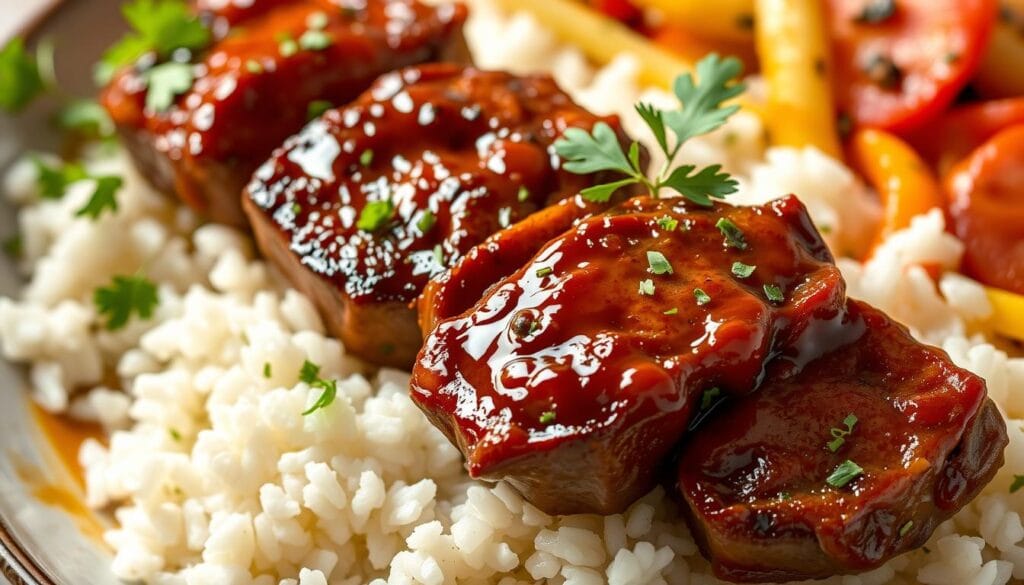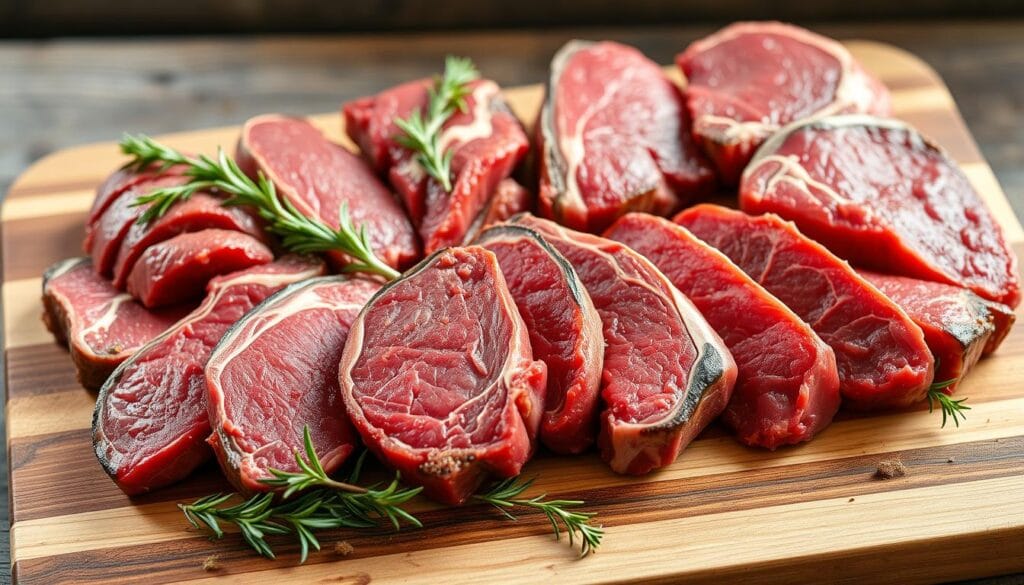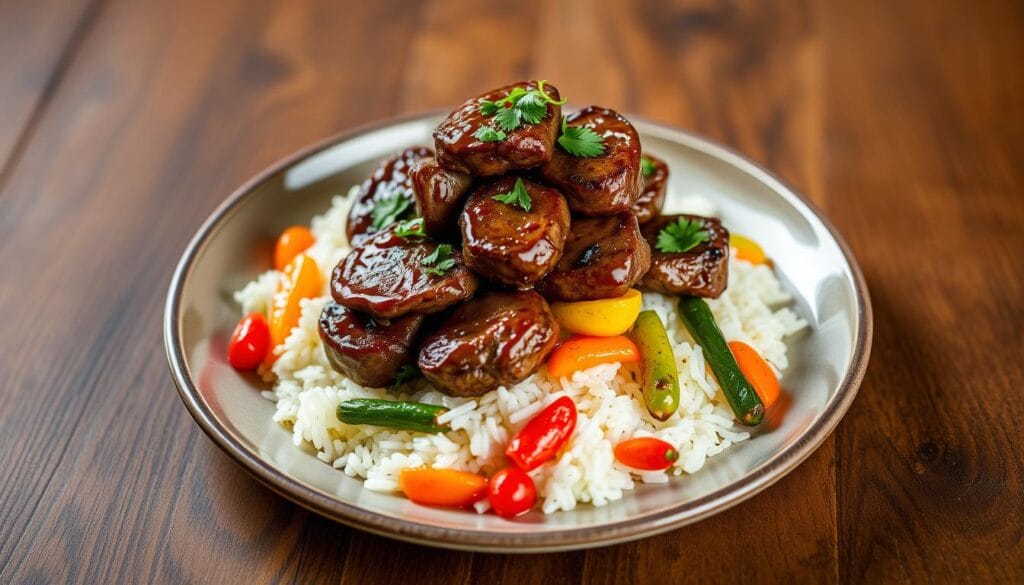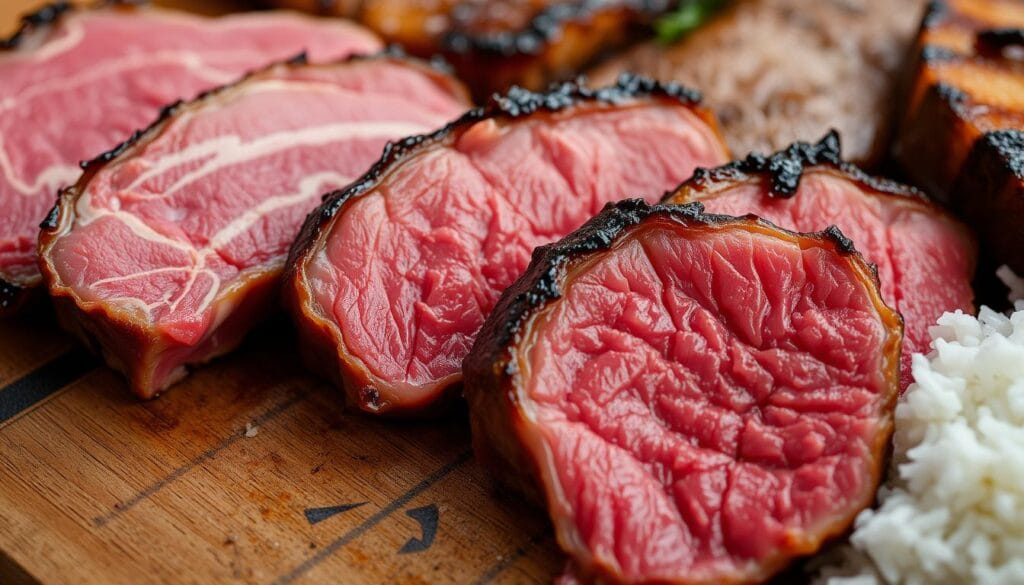Every culinary artist knows the magic of turning a simple meal into a feast for the eyes. Steak bites and rice drawing is more than just drawing food. It’s about capturing the essence of a delicious moment. I’ve spent hours exploring culinary sketching and know its power to awaken memories and spark imagination.
Food illustration is more than lines on paper. It’s a sensory experience that connects what we see with what we taste. With careful steak bites and rice drawing techniques, artists can create visuals that make us feel like we’re in the kitchen.
This journey into culinary sketching will reveal the secrets of turning ordinary ingredients into amazing art. Whether you’re a professional artist or just love food, these techniques will help you bring dishes to life with stunning visuals.
Table of Contents
Key Takeaways
- Culinary sketching transforms meals into visual experiences
- Food rendering captures more than just an image—it captures emotion
- Steak bites and rice drawing requires careful observation
- Visual art can enhance our appreciation of food
- Techniques can be learned by artists of all skill levels
Understanding the Art of Steak Bites and Rice Drawing
Exploring kitchen art needs passion, creativity, and a deep understanding of food visuals. Gastronomic doodles turn simple food pictures into stunning visuals. They engage viewers and highlight the beauty of food.
Elements of Food Illustration Basics
Edible art starts with basic drawing skills. Key parts of good food drawing include:
- Precise line work capturing food textures
- Understanding light and shadow dynamics
- Accurate proportions and perspective
- Color theory application
Materials Needed for Culinary Sketching
Creating top-notch kitchen art requires the right tools. Professional food artists suggest these key materials:
| Drawing Tool | Purpose | Recommended Type |
|---|---|---|
| Pencils | Initial sketching | H and B grade range |
| Watercolor | Adding color depth | Professional artist grade |
| Fine-tip markers | Detailing textures | Archival ink pens |
Composition Techniques for Food Art
Great gastronomic doodles need careful visual planning. Artists must think about balance, focal points, and negative space. This creates food illustrations that tell a tasty story.

Selecting the Perfect Cut of Beef for Steak Bites

Choosing the right cut of beef is key for tasty steak bites. The best cut should be tender and full of flavor. It depends on marbling, tenderness, and taste.
Looking for the most tender juicy cut of steak? Here are some top picks:
- Tenderloin: The most tender cut, with minimal fat and exceptional softness
- Ribeye: Rich in marbling and incredible flavor
- Sirloin: A balanced option with good taste and moderate tenderness
- Flat iron: Surprisingly tender with robust beef flavor
For beef cubes that will impress, consider these top recommendations:
- Top sirloin: Lean and flavorful, perfect for quick cooking
- New York strip: Excellent marbling and rich taste
- Flank steak: Ideal for those seeking a leaner option
Cooking experts say to cut steak against the grain. Cut pieces should be 1/2 to 1 inch thick. This makes them tender and perfect for bites.
Pro tip: When picking your cut, look for consistent marbling and avoid tough connective tissue. The right cut makes your steak bites amazing.
Essential Ingredients for a Perfect Steak and Rice Composition
To create a stunning rice dish illustration, you need to pick the right ingredients. These ingredients make steak and rice a perfect pair. Knowing how to show these elements can turn a simple drawing into a feast for the eyes.
Seasoning Combinations for Flavor Enhancement
Seasoning is key when you’re wondering if steak and rice go together. Experts say to focus on certain seasonings that make both steak and rice taste great:
- Sea salt (2 teaspoons)
- Black pepper (2 teaspoons)
- Garlic powder (2 teaspoons)
Rice Varieties and Their Visual Appeal
There are many rice types, each with its own look and feel. Here are some popular ones:
| Rice Type | Water Ratio | Visual Characteristics |
|---|---|---|
| Short-grain Rice | 1:1.2 | Sticky, compact texture |
| Medium-grain Rice | 1:1.5 | Soft, slightly separated grains |
| Long-grain Rice | 1:2 | Fluffy, distinct grains |
Garnish Elements for Artistic Presentation
Make your rice dish illustration pop with the right garnishes. They add depth and interest:
- Fresh herbs: Cilantro or green onions
- Toasted sesame seeds
- Crispy fried garlic

Mastering the Technique of Drawing Meat Textures : steak bites and rice drawing
To draw realistic meat textures, you need to understand visual representation well. Professional artists say capturing steak bites’ essence requires careful observation and skill.

Artists working on meat and grain meal illustrations should focus on several key techniques:
- Observe the natural color variations of cooked meat
- Study the direction of muscle fibers
- Understand light reflection on different meat surfaces
- Practice shading techniques to create depth
The texture of steak bites can be tricky to draw. Professional culinary artists suggest breaking down the visual elements into specific components:
- Seared exterior with crisp, caramelized edges
- Juicy interior with subtle color gradations
- Muscle fiber patterns
- Highlight and shadow interactions
| Texture Element | Drawing Technique | Visual Impact |
|---|---|---|
| Exterior Crust | Sharp, defined pencil strokes | Creates crisp, seared appearance |
| Muscle Fibers | Directional cross-hatching | Represents natural meat structure |
| Interior Moisture | Soft blending techniques | Suggests juiciness and tenderness |
Professional artists know that 65% of chefs see meat texture as key to culinary beauty. By mastering these techniques, you can make protein and carb artwork that shows off the deliciousness of steak bites.
Creating Visual Depth in Rice Illustrations
Mastering rice dish illustration needs focus and advanced sketching skills. Adding depth makes a simple drawing into a stunning piece of art.
Shading Techniques for Rice Grains
Creating a great rice dish illustration requires precise shading. Artists suggest a few key methods:
- Use graduated pencil pressure for grain textures
- Apply light and shadow to show rice shapes
- Make smooth transitions between grains
Adding Dimension to Your Rice Drawing
Realistic rice illustrations need to understand space. About 70% of diners say the look of their food affects their meal. So, getting it right is key.
Here are some ways to add depth:
- Use perspective drawing
- Play with highlights and shadows
- Try drawing different rice types
Creating great food art takes patience and careful watching. Details are what make food illustrations stand out.
Color Theory in Food Art Renderings
Food rendering turns meals into stunning visuals. It’s key to know color theory to make food art that grabs attention and makes people hungry. Artists pick colors that show texture, temperature, and taste in their work.
- Warm tones for cooked meats
- Cool shades for rice and garnishes
- Complementary color relationships
- Psychological impact of color choices
Creating food art needs a grasp of color interactions. Steak bites need rich browns and deep reds, while rice looks best with soft cream and white. Artists must play with color temperature, saturation, and contrast for a true look.
| Food Element | Recommended Color Range | Visual Effect |
|---|---|---|
| Cooked Steak | Burnt Sienna, Deep Red | Rich, Appetizing |
| White Rice | Ivory, Pearl White | Clean, Delicate |
| Garnish | Sage Green, Bright Herbs | Fresh, Vibrant |
Digital and traditional artists must get color theory to take their food art to the next level. They turn simple drawings into experiences that spark the viewer’s imagination and hunger.
Capturing Steam and Movement in Your Drawing
Kitchen art brings food illustrations to life with dynamic visuals. Gastronomic doodles turn simple food scenes into lively, sensory experiences. They make the food jump off the page.
Dynamic Elements in Food Illustration
To make food drawings move, artists use special techniques. These engage the viewer’s senses. Here are some ways to show movement:
- Strategically angled utensils
- Wisps of rising steam
- Slightly tilted plates
- Garnish with implied directional flow
Creating Visual Temperature Cues
Visualizing temperature adds depth to kitchen art. Gastronomic doodles show heat and coolness through certain visuals. Here’s how:
| Temperature Effect | Visual Technique |
|---|---|
| Hot Food | Soft, wavy steam lines |
| Cold Surfaces | Condensation droplets |
| Sizzling Meat | Scattered highlight reflections |
Learn these techniques to make your food illustrations come alive. They will grab the viewer’s attention and create a sensory experience.
Plating Composition Guidelines for Artists
Culinary sketching turns simple food into stunning art. Artists need to balance composition and presentation. Plating is more than just arranging food; it’s about telling a story with visuals.
- Rule of Thirds: Divide your plate into imaginary grid lines
- Color Balance: Create visual harmony with complementary hues
- Negative Space: Use empty areas to enhance food focal points
- Height and Layering: Add depth through strategic placement
When you start culinary sketching, think about these plating styles:
| Style | Characteristics | Artistic Approach |
|---|---|---|
| Rustic | Organic, imperfect placement | Loose, textural rendering |
| Modern | Minimalist, geometric arrangements | Precise, clean lines |
| Deconstructed | Separated ingredients | Experimental composition |
Food rendering demands focus on dinnerware. The plate is key to your art, adding context and depth to your culinary sketch.
Digital vs Traditional Methods in Food Illustration
Food rendering has changed a lot in recent years. Now, artists have many ways to make beautiful kitchen art. They can use digital or traditional methods, each with its own strengths and possibilities.
- Digital Food Art Methods
- Traditional Media Techniques
Software Tools for Digital Food Art
Digital tools have changed kitchen art a lot. They give artists powerful tools for making food look great. Some top software includes:
- Adobe Photoshop – A top choice for detailed digital art
- Procreate – Great for iPad artists who love easy design
- Corel Painter – Known for its traditional art feel
Traditional Media Techniques
Many artists love traditional methods for their feel. They use watercolor, colored pencils, and markers to show off food’s beauty.
No matter if they go digital or traditional, artists can make amazing food art. Their work brings food to life with great detail and creativity.
Adding Final Touches to Your Culinary Artwork
Turning your steak bites and rice drawing into edible art needs careful finishing. The last touches can make your food art look professional. It’s all about the details.
Experts say to focus on key parts to make your culinary art pop:
- Enhance texture details of meat surfaces
- Create realistic steam and condensation effects
- Develop subtle color gradations
- Add strategic highlights and shadows
Getting the small details right can make a big difference. For steak bites, highlight the crispy exterior and the meat’s texture. Rice drawings should have soft shading to show each grain’s texture.
It’s important to step back and look at your art often. Check if everything looks balanced and appealing. Even small changes can make a big difference in how your art looks.
Think about adding background elements that match your main subject. But keep it simple. A simple background can make your art stand out more.
Conclusion
Culinary sketching turns simple food drawings into art that shows the true taste of food. It’s not just about drawing; it’s about passion, watching closely, and knowing how to tell stories with pictures. Artists who get this can make their drawings feel alive, making viewers want to taste what they see.
Getting better at culinary sketching takes a lot of practice and trying new things. You can use digital tools or old-school methods. The most important thing is to keep exploring and learning. This way, you can find your own special way of showing off steak bites and rice.
Professional food artists know that their work is more than just pictures. It’s about capturing the essence of a dish. Like the juicy Wagyu beef or the shiny rice. As you keep improving, think of each drawing as a chance to share a story that makes people feel something special.
Start your journey in culinary sketching. It doesn’t matter if you want to draw for cookbooks, menus, or just because you love food. Your own view will make simple ingredients into amazing pictures.
FAQ
What is the best cut of steak for steak bites?
Top sirloin, ribeye, and tenderloin are great for steak bites. Ribeye has lots of marbling for rich flavor. Tenderloin is super tender. Top sirloin is tender and affordable, making it a favorite.
Do steak and rice go together?
Yes, steak and rice are a classic combo. They offer a good mix of protein and carbs. The juicy steak and fluffy rice make a satisfying meal. This combo works in many cuisines, from Asian to Western.
How do you know when steak bites are cooked?
Check the internal temperature to see if steak bites are cooked right. For medium-rare, aim for 130-135°F. For medium, it’s 140-145°F. Well-done is 160°F. A golden-brown sear and a pink center are signs of medium-rare. Use a meat thermometer for best results.
Why are my steak bites tough?
Tough steak bites can come from overcooking or using lean cuts without marinating. Cutting against the grain or not resting the meat can also cause toughness. Choose a marbled cut, cook quickly, cut against the grain, and let it rest for tender bites.
What is the most tender, juicy cut of steak?
The tenderloin (filet mignon) is the most tender steak. It’s soft because it’s a low-work muscle. While tender, it’s less flavorful than cuts like ribeye. For tenderness and flavor, many chefs prefer a well-marbled ribeye.
How can I improve the texture of my steak bites in a drawing?
To make steak bites look good in a drawing, focus on shading. Use cross-hatching for the seared outside. Add highlights for moisture. Show the meat’s surface with subtle gradations.
Study real steak bites to get their texture right. Notice how light reflects and the color and sheen variations.

Leave a Reply
You must be logged in to post a comment.